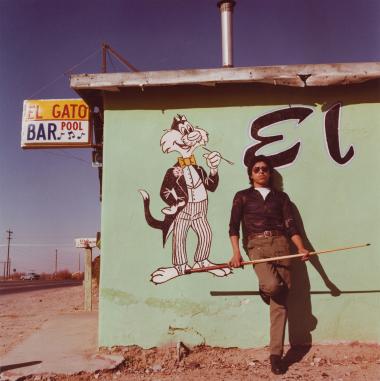2021 Henry Luce Foundation Grant
82077087_c.jpg

The Center for Creative Photography (CCP) has received a $255,000 grant from the Henry Luce Foundation to fund an exhibition featuring the work of Louis Carlos Bernal, a beloved Arizona artist best known for capturing barrio life in the Southwest.
The center acquired a sizable addition to its Bernal holdings in 2014. With the Luce Foundation grant, CCP will commemorate this addition with a substantial exhibition, open to the public in the fall of 2024.
“We are so grateful for the Luce Foundation’s investment,” said Anne Breckenridge Barrett, the director of the center and associate vice president for the arts at the University of Arizona. “The Louis Carlos Bernal exhibition and publication will bring awareness to a significant Chicanx photographer, whose life work resides at the Center for Creative Photography. Bernal’s untimely death at age 52 resulted in a loss of appreciation for his oeuvre. A reintroduction at the 30-year anniversary of his passing will increase attention, promote dialogue, and reinvigorate recognition of his photographs.”
A leader in art funding since 1982, the Luce Foundation's American Art Program supports innovative museum projects nationwide that advance the role of visual arts of the United States in an open and equitable society, and the potential of museums to serve as forums for art-centered conversations that celebrate creativity, explore difference, and seek common ground.
“One of our guiding principles within Arizona Arts is that our location in the Sonoran Desert provides a rich context for rigorous engagement with the arts,” said Andrew Schulz, vice president for the arts. “This Luce-funded project to make better known Louis Bernal’s artful documentation of the Mexican-American experience is a prime example of our commitment to that principle.”
Bernal founded the photography program at Pima Community College in 1972 and served as an instructor for 17 years.
In 1979, Bernal, along with four other photographers, received funding from the Mexican American Legal Defense and Educational Fund to photograph Chicano culture in the Southwest for “ESPEJO: Reflections of the Mexican American.” The commission brought him closer to his ethnic roots and fueled a passionate direction for his work that gained him acclaim for championing regional diversity while symbolizing his exploration of identity as a Mexican American.
97046038_c.jpg

Bringing a shift in approach to Latin American documentary street photography, Bernal photographed in the barrio – a young girl and her grandfather in a corner barber shop, a girl taking her quinceañera, or locals posing in front of colorful wall murals – images that captured the unique character of Chicano life.
“My images speak of the religious and family ties I have experienced as a Chicano,” Bernal said. “I have concerned myself with the mysticism of the Southwest and the strength of the spiritual and cultural values of the barrio.”
He felt a particular urgency to document the streets, people, homes, and artifacts in historic neighborhoods, as many were undergoing rapid changes or being bulldozed to make way for urban renewal. In recording the Mexican-American experience of Southwest towns and barrios, Bernal created a visual document that preserves the specific iconography and reveals many aspects of this distinct culture.
The Louis Carlos Bernal Collection contains 1,200 fine prints, both black-and-white and color, and research materials that include project records, correspondence, clippings, writings and publications. Bernal died in 1993 at 52.

